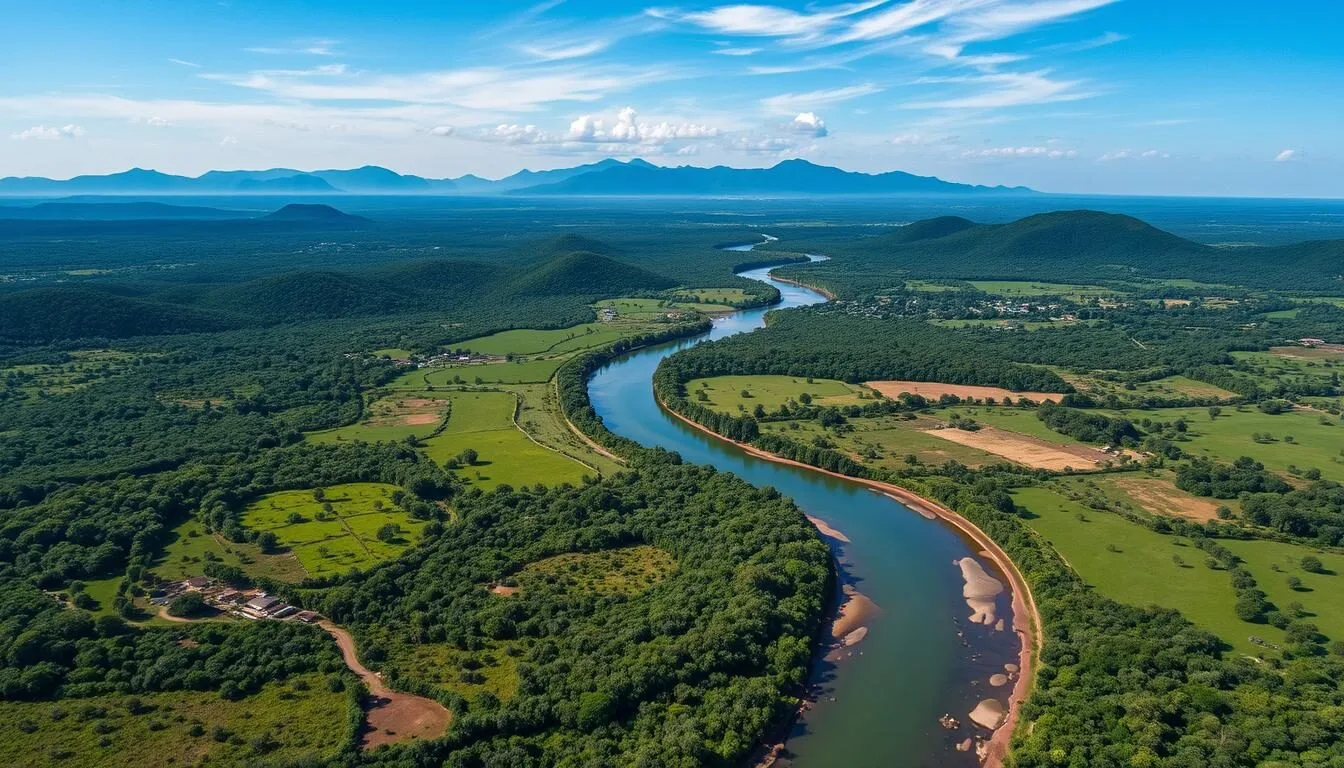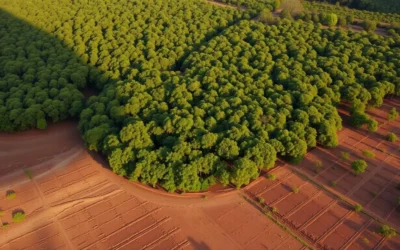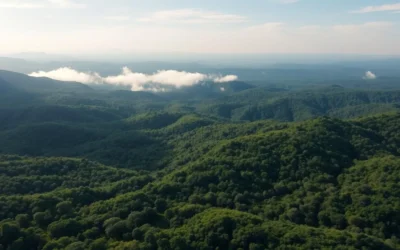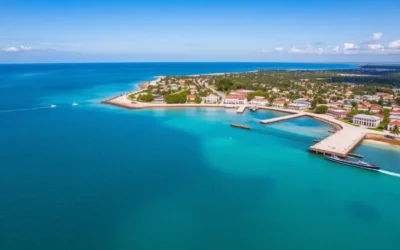Did you know that Ambanja produces over 60% of Madagascar’s world-famous cocoa? This hidden gem in northwestern Madagascar is the heart of the Sambirano region, where the perfect combination of regular rainfall and tropical climate creates ideal conditions for growing some of the finest cocoa, vanilla, and ylang-ylang in the world. Beyond its agricultural fame, Ambanja offers travelers a perfect blend of lush landscapes, vibrant markets, and access to incredible biodiversity that remains largely undiscovered by mass tourism.
Getting There & Planning Your Journey
Reaching Ambanja requires some planning, but the journey is part of the adventure. The town is located about 20 kilometers from the Mozambique Channel in northwestern Madagascar, southeast of the popular Nosy Be island.
By Air
The most convenient way to reach Ambanja is to fly into Fascene Airport on Nosy Be island, which receives international flights and domestic connections from Antananarivo (Madagascar’s capital). From Nosy Be, you’ll need to take a boat to Ankify harbor, followed by a 18km taxi or taxi-brousse (shared minivan) ride to Ambanja.
Find the Best Flights to Madagascar
Search for affordable flights to Nosy Be or Antananarivo and start your Ambanja adventure.
By Road
If you’re already in Madagascar, you can reach Ambanja by taxi-brousse from Antananarivo. Be prepared for a journey of 18-24 hours or longer, depending on road conditions. While challenging, this option allows you to see more of Madagascar’s diverse landscapes.
Explore Madagascar at Your Own Pace
Rent a car and enjoy the freedom to discover Ambanja and beyond on your schedule.
Best Time to Visit & Weather Tips

Ambanja has a tropical climate with distinct wet and dry seasons that significantly impact your travel experience.
Dry Season (May to October)
The dry season is generally considered the best time to visit Ambanja. From mid-May to late October, you’ll experience less rainfall, lower humidity, and clearer skies. This period is ideal for exploring cocoa plantations, trekking along the Sambirano River, and enjoying outdoor activities. August is particularly pleasant with minimal rainfall and comfortable temperatures averaging 75°F (24°C).
Wet Season (November to April)
The wet season brings heavy rainfall, especially from December through February, with February being the wettest month (averaging 10.9 inches of rainfall). While the landscapes become incredibly lush during this period, some trails may be difficult to navigate, and outdoor activities can be disrupted by afternoon downpours. If you visit during this time, plan activities for the morning hours when rain is less likely.
| Season | Months | Temperature | Rainfall | Recommendation |
| Dry Season | May-October | 75-93°F (24-34°C) | Minimal (0-0.5 inches) | Highly recommended |
| Wet Season | November-April | 73-93°F (23-34°C) | Heavy (2.1-10.9 inches) | Challenging but lush |
Getting Around Locally
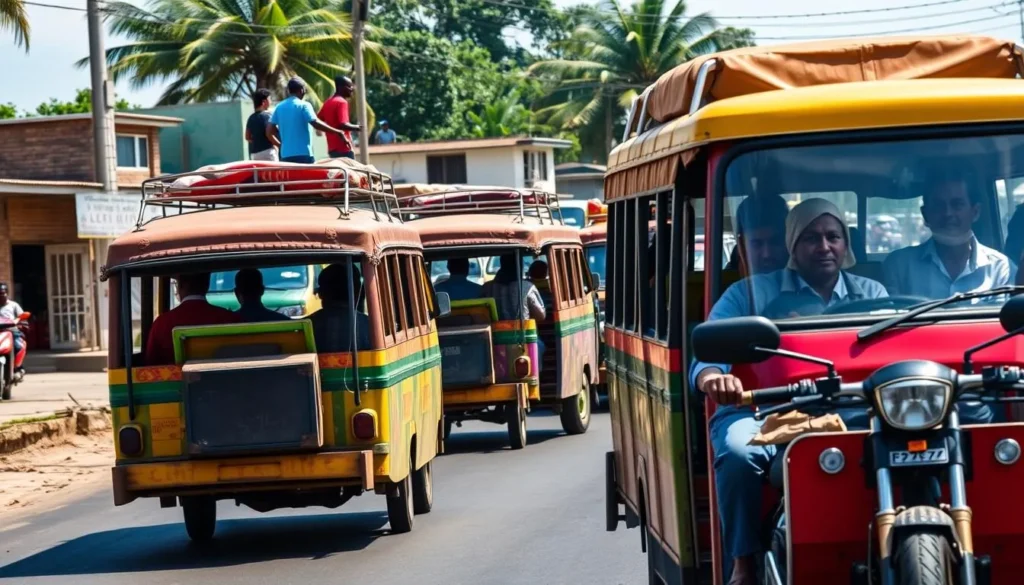
Navigating Ambanja and its surrounding areas is part of the adventure. The town itself is relatively small and can be explored on foot, but you’ll need transportation to visit nearby attractions.
Taxi-Brousses
These shared minivans are the most common form of public transportation in Madagascar. They connect Ambanja to nearby villages and attractions, though they don’t run on fixed schedules and typically depart when full. While inexpensive, they can be crowded and uncomfortable for longer journeys.
Motorcycle Taxis
For short distances within Ambanja or to nearby villages, motorcycle taxis offer a quick and relatively affordable option. Always negotiate the price before setting off.
Bicycle Rentals
Several operators in Ambanja offer bicycle rentals, which are perfect for exploring the town and nearby cocoa plantations at your own pace. Madabike offers guided bike tours through cocoa plantations and along the Sambirano River.
Private Car with Driver
For maximum flexibility and comfort, consider hiring a car with a driver for day trips or longer excursions. Your accommodation can typically arrange this service.
Where to Stay
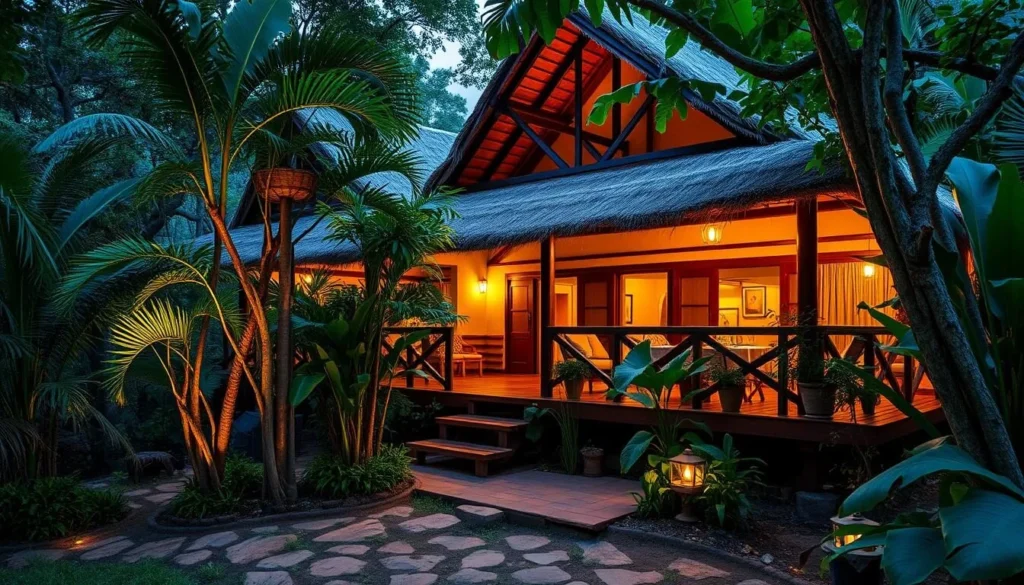
Ambanja offers a range of accommodation options, from simple guesthouses to more comfortable hotels. While luxury options are limited, you’ll find clean and welcoming places to stay that provide a genuine local experience.
Mid-Range Hotels
- Palma Nova – A well-maintained hotel with a restaurant and bar in the center of town.
- Khaïr Lodge – Offering comfortable rooms and good service in a convenient location.
- Nord Inn Hotel – A reliable option with clean rooms and helpful staff.
Budget Options
- Hotel Patricia – A simple but clean hotel with a restaurant and bar.
- La Timoniere – Basic accommodations at affordable prices.
- Ylang-Ylang – Budget-friendly option with a central location.
Find Your Perfect Stay in Ambanja
Browse accommodations in and around Ambanja to find the perfect base for your Madagascar adventure.
Most accommodations in Ambanja are concentrated along the main road. While amenities may be basic compared to international standards, the warm Malagasy hospitality more than makes up for it. We recommend booking in advance, especially during the dry season (May-October) when visitor numbers are higher.
Dining & Local Cuisine
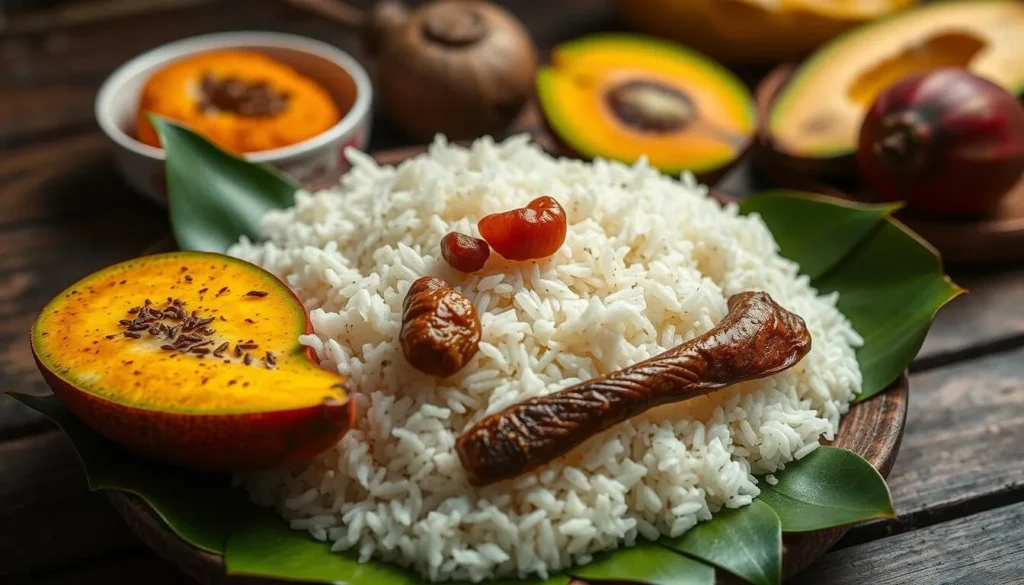
Ambanja’s culinary scene reflects its agricultural abundance, with fresh tropical fruits, locally grown spices, and seafood from the nearby coast featuring prominently in local dishes.
Local Specialties
- Romazava – Madagascar’s national dish consisting of beef, pork or chicken cooked with greens and ginger.
- Cocoa-infused dishes – Given Ambanja’s fame for cocoa production, look for special dishes incorporating local chocolate.
- Fresh tropical fruits – The region produces excellent mangoes, pineapples, and bananas.
- Seafood – Fresh fish and prawns from the nearby coast are often available.
Where to Eat
Most hotels in Ambanja have their own restaurants serving both Malagasy and international dishes. Additionally, you’ll find several independent eateries along the main road:
- Cacao Bar – As the name suggests, this place celebrates the region’s cocoa heritage with chocolate-themed drinks and snacks.
- Palma Nova Restaurant – Offers a varied menu of Malagasy and European dishes in a pleasant setting.
- Bazary Be Market – Not a restaurant, but a great place to sample fresh local fruits, spices, and street food.
Don’t miss the opportunity to visit the local markets, particularly the large open-air market near the northern entrance of town, where you can purchase fresh produce, spices, and sample authentic street food.
Attractions, Sightseeing & Activities

Ambanja offers a wealth of attractions centered around its natural beauty, agricultural heritage, and vibrant local culture.
Millot Plantation
Established in 1904, this historic plantation is a leading producer of organic cocoa, spices, and essential oils. A guided tour offers insight into the cultivation and processing of these crops, along with the opportunity to taste some of the world’s finest chocolate at its source. The plantation’s beautiful grounds, with their colonial-era buildings and lush vegetation, are worth the visit alone.
Sambirano River
The lifeblood of the region, the Sambirano River offers opportunities for canoeing, swimming, and fishing. A boat trip along the river provides a unique perspective on the surrounding landscape and access to villages that can’t be reached by road.
Local Markets
Ambanja has two main markets: the large open-air market near the northern entrance of town and the smaller Bazary Be. Both offer a fascinating glimpse into local life and the chance to purchase spices, handicrafts, and fresh produce directly from farmers.
Discover Ambanja’s Best Experiences
Book guided tours, cocoa plantation visits, and river excursions with expert local guides.
Museums, Cultural Spots & Festivals
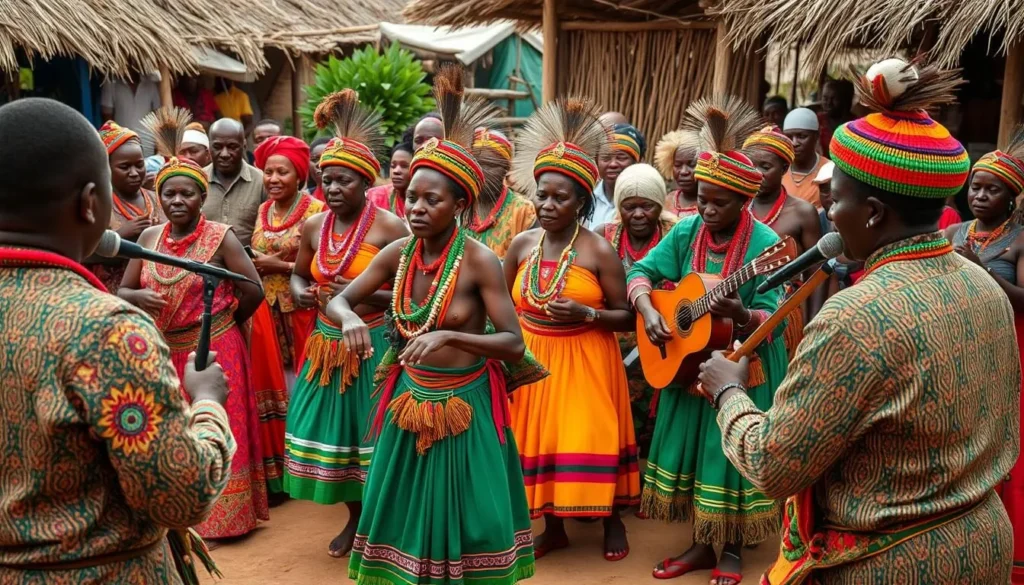
While Ambanja may not have formal museums, its cultural richness is expressed through community traditions, religious sites, and seasonal celebrations.
Cultural Heritage
Ambanja is primarily home to the Sakalava people, one of Madagascar’s major ethnic groups. Their traditions, including music, dance, and craftsmanship, are an integral part of daily life. Visitors interested in local culture should seek opportunities to experience traditional music performances, which often feature the distinctive sounds of the valiha (bamboo tube zither) and kabosy (small guitar).
Religious Sites
The town has several churches and mosques reflecting its diverse religious heritage. The Catholic mission, established during the French colonial period, is particularly noteworthy for its architecture and historical significance.
Festivals
If your visit coincides with a local festival, you’re in for a treat. The most significant celebrations include:
- Independence Day (June 26) – Celebrated throughout Madagascar with music, dance, and feasting.
- Famadihana (July-September) – The famous “turning of the bones” ceremony, a unique Malagasy tradition honoring ancestors.
- Harvest Festivals – Various celebrations marking the cocoa, vanilla, and rice harvests throughout the year.
Sports, Nature & Outdoor Experiences
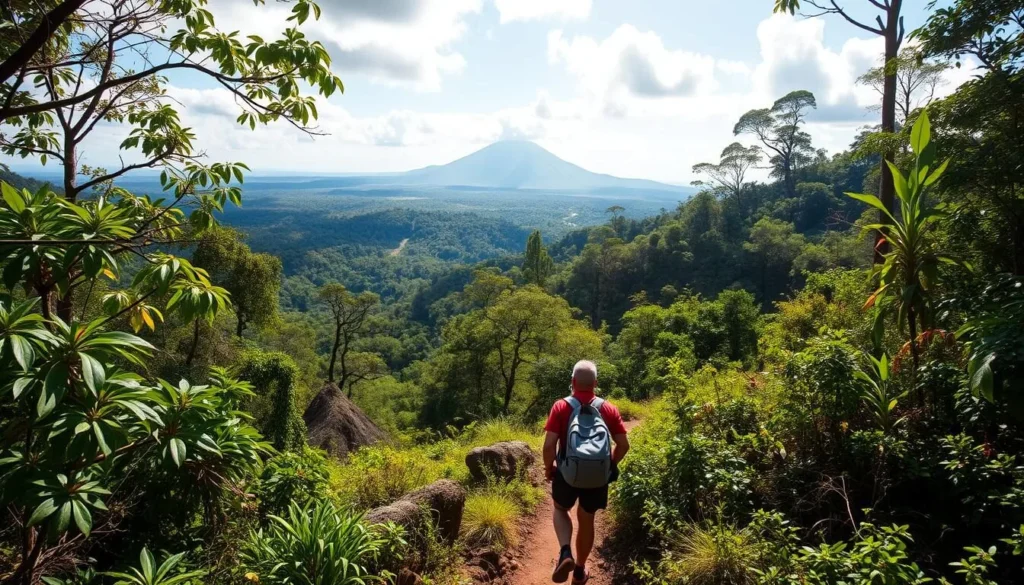
The natural environment around Ambanja offers endless opportunities for outdoor enthusiasts, from gentle walks through plantations to challenging treks in the mountains.
Trekking & Hiking
The Sambirano River Trekking Tour is a highlight for adventurous travelers, taking you from Ambanja to the foothills of the Tsaratanana Massif. This 8-day journey requires reasonable fitness but rewards with spectacular scenery and encounters with rare wildlife. For less strenuous options, numerous shorter trails wind through the cocoa plantations and surrounding forests.
Wildlife Watching
The region is famous for its colorful chameleons, particularly the Ambanja Panther chameleon (Furcifer pardalis). Forests near Ambanja offer opportunities to spot several lemur species, including the northern giant mouse lemur (Mirza zaza) and the northern bamboo lemur (Hapalemur occidentalis). Night walks with a local guide are particularly rewarding for wildlife enthusiasts.
Cycling
The relatively flat terrain around Ambanja is perfect for exploration by bicycle. Madabike offers guided tours through cocoa plantations, along the Sambirano River, or to nearby villages, providing an intimate and eco-friendly way to experience the landscape.
Water Activities
The Sambirano River offers opportunities for swimming, canoeing, and fishing. For those seeking beach activities, the nearby coast at Ankify provides access to the Mozambique Channel.
Safety, Etiquette & Local Customs

Visiting Ambanja safely and respectfully requires understanding local customs and taking appropriate precautions.
Safety Tips
- Ambanja is generally safe, but take standard precautions with valuables, especially in crowded markets.
- Carry a copy of your passport rather than the original when exploring.
- Use reputable guides for excursions into remote areas.
- Take malaria prophylaxis and use insect repellent, as the region has mosquito-borne diseases.
- Drink bottled or purified water and be cautious with uncooked foods.
Cultural Etiquette
- Greetings are important in Malagasy culture. A simple “Salama” (hello) goes a long way.
- Ask permission before photographing people, especially in rural villages.
- Dress modestly, particularly when visiting religious sites or traditional communities.
- Remove shoes when entering someone’s home.
- Respect “fady” (taboos) which vary by region – your guide can advise on local customs.
The people of Ambanja are known for their hospitality and warm smiles. Taking time to learn a few phrases in Malagasy and showing respect for local traditions will greatly enhance your experience.
Practical Travel Tips
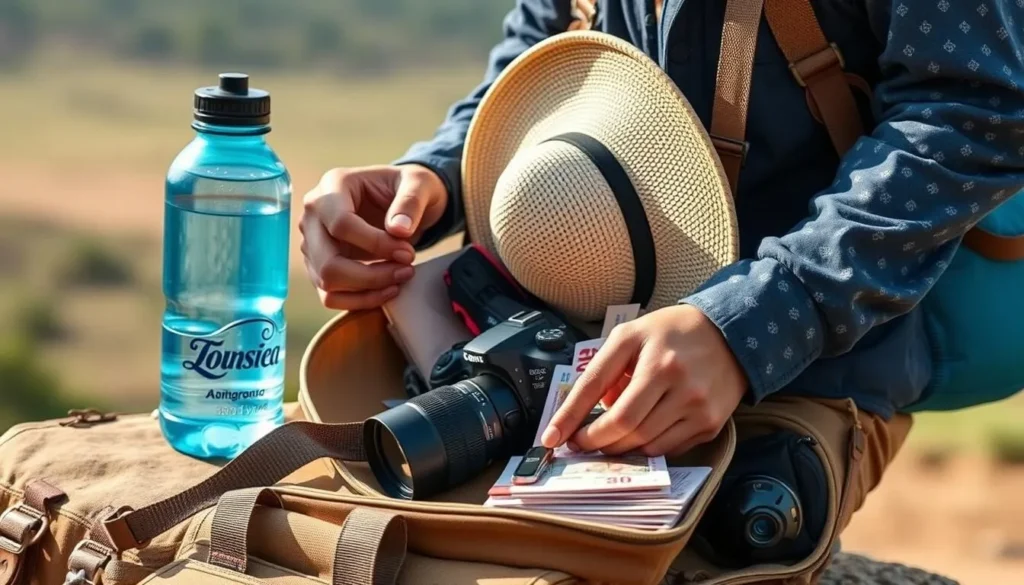
These practical tips will help you make the most of your visit to Ambanja:
Money & Banking
- The local currency is the Malagasy Ariary (MGA).
- There are limited ATM facilities in Ambanja, so bring sufficient cash.
- Major hotels may accept credit cards, but most businesses operate in cash only.
- Exchange money at official banks rather than on the street.
Communication
- Purchase a local SIM card for affordable data and calls (Telma, Orange, and Airtel are major providers).
- Internet access is available at some hotels but may be slow and unreliable.
- The main languages are Malagasy and French, with limited English spoken.
Packing Essentials
- Lightweight, breathable clothing suitable for tropical weather
- Rain gear during the wet season (November-April)
- Sun protection (hat, sunglasses, sunscreen)
- Insect repellent and basic first aid supplies
- Comfortable walking shoes for exploring plantations and markets
- Flashlight or headlamp for power outages and night walks
Health Considerations
Consult your doctor about vaccinations and malaria prophylaxis before traveling to Madagascar. The nearest hospital to Ambanja is in Nosy Be, so bring any essential medications with you. Travel insurance with medical evacuation coverage is strongly recommended.
Ready for Your Ambanja Adventure?
Start Planning Your Trip to Ambanja Today
From cocoa plantations to river treks, Ambanja offers authentic experiences in one of Madagascar’s most beautiful regions.
Ambanja may not be on every traveler’s radar, but those who venture to this cocoa-scented corner of Madagascar are rewarded with authentic experiences, breathtaking landscapes, and warm hospitality. Whether you’re trekking along the Sambirano River, learning about chocolate production at a historic plantation, or simply soaking in the vibrant atmosphere of the local markets, Ambanja offers a genuine taste of Madagascar away from the tourist crowds. Pack your sense of adventure and prepare to be charmed by this hidden gem in the heart of the Sambirano region.
The above is subject to change.
Check back often to TRAVEL.COM for the latest travel tips and deals.
